1994 Mercury Grand Marquis, Fixing Up a Used Panther : part 1 Disassembly and Inspection
2023, November 14
part 1 - part 2 - part 3 - part 4 - part 5 - part 6 - part 7 - part 8Hello,
Dunno if anyone might find this of interest, but thought what the heck. The Crown Vic, Town Car and Grand Marquis are all Panthers and mostly the same thing.
We bought this to replace my old 1993 Grand Marquis LS, it was getting rusty as it was from the Midwest originally and the decade + of winters had already took it toll on the ferrous parts of the car. I've already replaced every single brake and fuel line in that car and they were getting rusty again. Plus the front wing has rust bleeding out through the paint on the lower leg so the steel was compromised and rust holes in the underside of the rockers. Anyway, you get the idea. Plus the engine was getting tired and was starting to burn oil.
So the wifey found a nicer Southern (ABQ metro area all its life) 1994 Grand Marquis LS on Craigslist. Although it was clean (rust wise) it wasn't without its fair share of problems. And 1,400 dollars later it was ours.
Before we sold off the 1993 since both cars had the same colour interior we took the best parts of the '93 and made the '94 as nice as it could be.
But onto the mechanical/electrical problems it had and what was done so far to correct them.
1. Had a shudder just after 40 MPH. --> drained all fluid from trans pan and torque converter (drain plug on converter), new filter and fluid. Problem solved.
2. Power windows either broke or really slow. --> Since Panthers are notorious for breaking regulators I just replaced all 4 regulators, dismantled the motors and cleaned the conductive brush material out of the commutator slots (shunts current from armature windings). All windows work great now.
3. Radio inoperative --> I couldn't find an easy like radio because this car has the premium sound system so I tore into the radio itself. This one is more involved, but short story it looks like the power supply watchdog had failed and would cause the micro to reset to off after the power button was pushed. I couldn't find the unique and outdated IC so I just disconnected it from the microcontroller input and it powers up normally and works fine. It'll do till either I can find a like replacement radio or a part/ logic board.
4. HVAC blower only works on high speed ---> This car has automatic climate control with a variable speed blower controller and not a standard resistor for the 3 lower speeds like the conventional system. It was the main transistor (To3 package) in the blower control that was open. I had a spare module and just replaced the whole thing. Problem fixed.
5. Check Engine Lamp --> After extracting the codes I had three; EGR Flow, EGR Pressure Sensor voltage out of range and circuit malfunction in Canister Purge. I tackled the canister purge first, I checked the purge solenoid valve and its resistance was nominal compared to a new one (had recently installed the same part in the 1993 for the same reason). Just to be sure I checked for power to the solenoid with key on and it was there so I just replaced the solenoid and that code went away. My educated guess is that even though it checks out fine on the bench after it warms up in use it either shorts or opens triggering the DTC.
As for the EGR flow, put a vacuum pump on the EGR valve, could hear it moving, but no change at idle so the ports are plugged and need to be cleaned. As for the pressure sensor having voltage out of range, I bought a new sensor and currently in process of mending these two problems.
6. No air con --> The system has no refrigerant in it. So I put a bit in and with an electronic sniffer confirmed the evaporator is leaking, also found the high side port damaged and when I checked the orifice tube I found most of the compressor innards against the screen. My guess is this was leaking for some time and they kept adding refrigerant but no oil. Well since all leaks carry the oil out, it slowly roasted the compressor. So new evaporator, new compressor, high pressure line, accumulator and orifice tube. In process of that.
7. Looses coolant --> Found the radiator has wet spots on the bottom (core is getting weak) and the water pump is wet around it. Also found the bearings in the water pump clunky and knackered, so new radiator, water pump and for good measure hoses and thermostat. In process of that.
8. Belt or belt driven item squeals like a cat being disemboweled for a few minutes when cold. --> found the idler, tensioner and water pump bearings not long for the world. The idler and tensioner bearings are loose and feel like they are using dirt for lubricant. New parts there and a new belt. In process.
So that's the waffling over with, here are a couple of pics. More to come and I get my arse in gear
Engine bay disassembly so far.
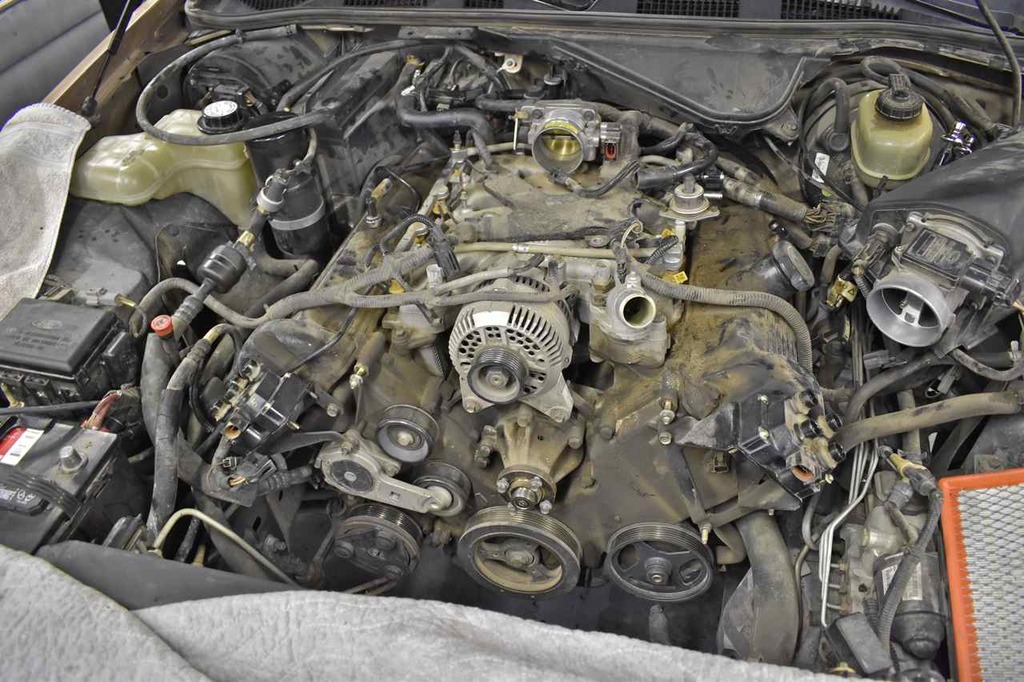
Table of new things including a radiator at the bottom.

Well you know how it is when you buy a used car, especially one that is 23 years old. I had my '93 for 10 years and kept up with all the niggles along the way. The previous owner let all that lapse so I'm trying to cram all that repair and maintenance in a few weeks so I won't have to worry about reliability so much.
So this is where I am at now
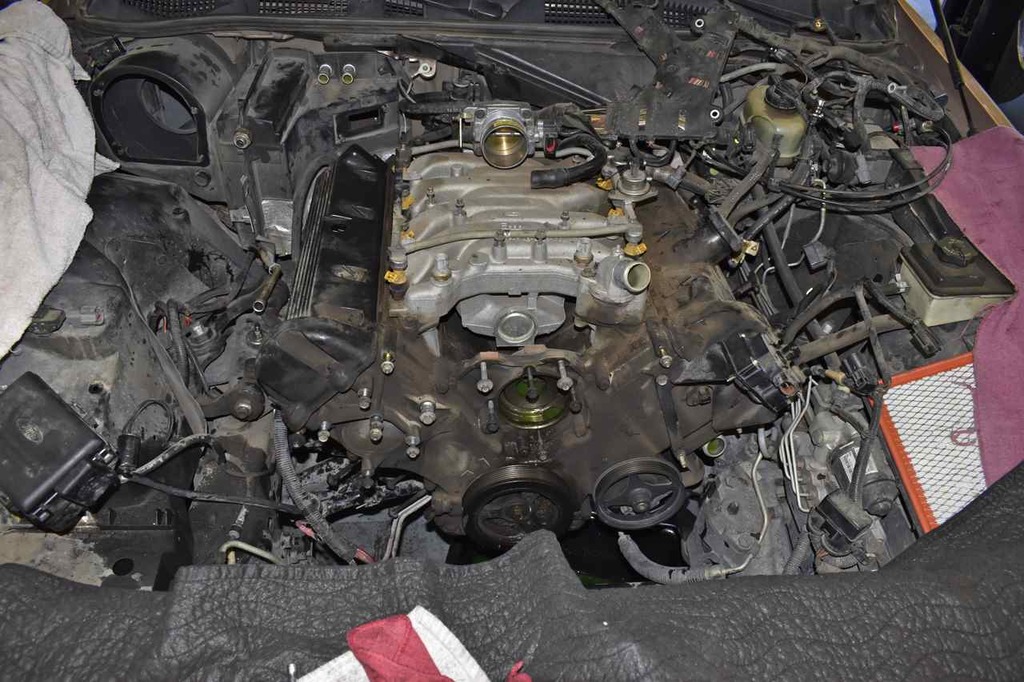
Still have to remove the intake and the HVAC plenum assembly. There's that brilliantly placed (NOT!) heater hose between the intake and valley that needs to be replaced.
You can see that little hymmmm----- part behind the water pump cavity. Plus the old gaskets in the intake could use a change, had to replace those on my '93 because it was running lean and they were just old and leaking.
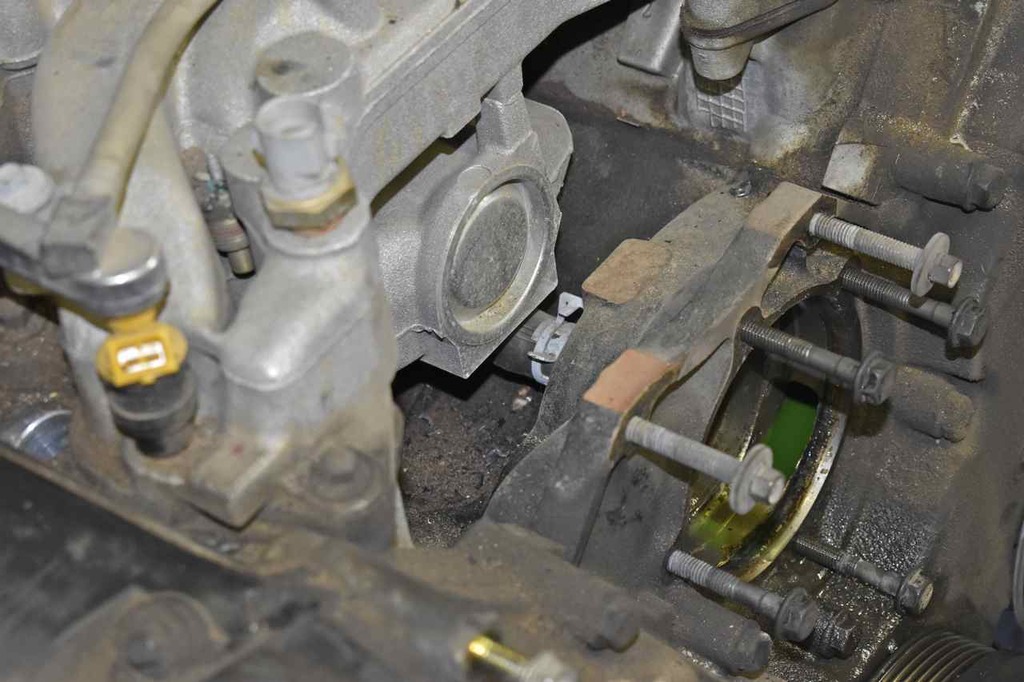
Now that HVAC plenum, ggggggggggrrrrrrrrrrrrrrrrrrrrrrrrrrrrrrrrr.

I've had to replace the evaporator on my '93 (seems to be a problem with these cars) and service manual pretends the engine is not in the car. Well duh, it's easy to remove without the bloody engine in the way. But some folks say in the forums you can flex/fight it out.
I tried that approach on the '93 and after 20 years the plasticizers in most of the plastic parts in the engine bay have long since "left the building" and I cracked my housing on my '93. So I'm hoping with the intake and the pass side rocker cover off I might be able to wiggle it out.
Still have to remove the inner apron on the pass side too.
Continuing on...
Actually that silly hose is about 6" long and connects the back of the water pump cavity to a steel pipe that traverses out the back of the block and up along the back of the passenger head where the flexible heater hose then connects it to the core. If Ford would have engineered that tube to flange seal to the back of the water pump cavity there would be no shorty hose to worry about. Try to change that on the side of the road..... nope..
Ug, oil changes I know how that goes, I still have to change coolant on the convertible (That '73 Chevrolet holds 6 gallons of coolant!), the Impala SS and the 2004 Grand Marquis.
That's going to be one full shopping cart with distilled water and antifreeze, not to mention a colossal mess, as it seems no mater how hard you try to drain the radiator and block into a container it ends up everywhere else but there.
Here's that insidious hose exposed. It clamps to the back of the block.
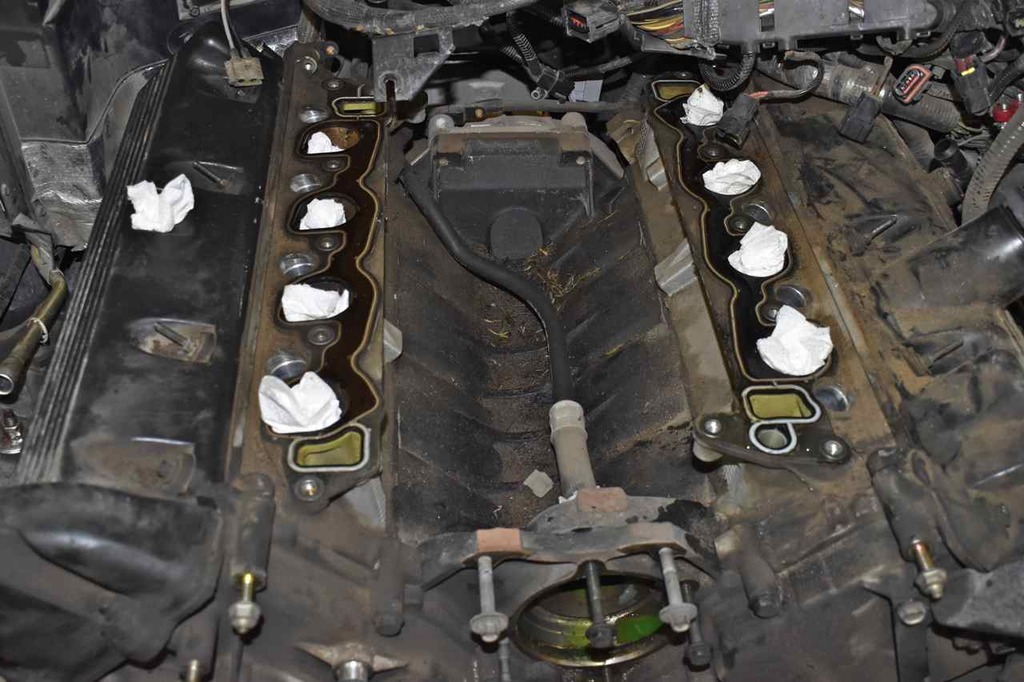
and the reason for the DTC (Check Engine lamp) of no EGR flow
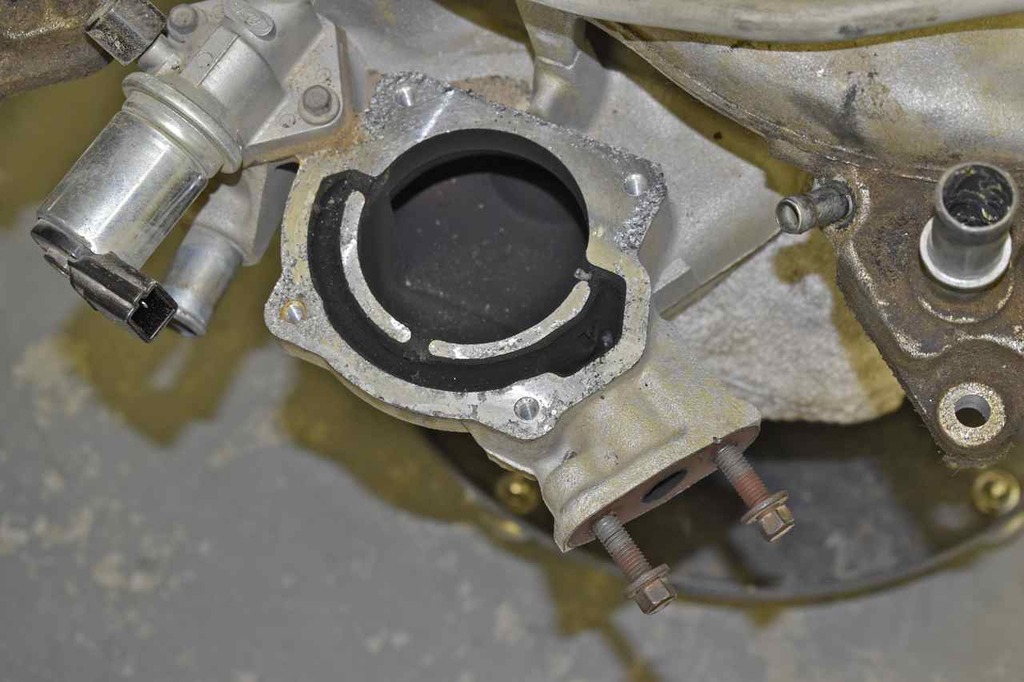
The 3 small EGR ports are completely plugged, just as I suspected.
Now onto the evaporator.....
This car has the 4.6L modular engine and if I may speak frankly, it is a bastard of an engine. The reason I say this is it's internally smaller than a 289, larger externally than a 460 and makes a Briggs and Stratton seem very powerful. Actually I wish Ford would have just used a nice little tuned port EFI Windsor in there. Yah I know they had to meet new corporate fuel economy standards imposed on by the Feds, but still.......
For a full size car this is so crammed in there at the back it's a bear to work on. It might as well a Mini Cooper with a big block shoved in there.
If I remember the 2004 Merc with the 4.6L also has this when I had to replace the intake. At some time Ford redesigned the intake to move the EGR topside more towards the throttle body (infinitely easier to get to) and they do not suffer from plugged EGR ports like this early rendition of the 4.6L. It's not uncommon every several years to have to clean these ports out. Did it twice in 10 years on the '93.
Of course when Ford redesigned the intake to cure the EGR plugging problem they simultaneously made it better by solving that problem and made it worse by making it out of a composite material. Hence the reason I had to replace the entire manifold on the 2004. It had more cracks in it than a windscreen cruising through an asteroid field.
Does anyone know what material those intakes are made from? Glass filled PC, ABS, Nylon? I like how they call it "composite" to make it sound high tech. It's high tech for cheap POS.
I am sure saving weight is foremost on their minds for fuel economy. But they should choose the areas in weight savings more carefully. Now if they would stamp the body out of aluminum there's their weight savings.
I can't but help feel the real reason the change from aluminum intake to composite was that it was plain and simple cheaper. For them.... not the consumer who has to replace it several years later. Or worse pay someone to replace it.
Now back to the thick of it.
The evaporator is housing is out.

so is a good portion of the car too......(sigh)
It appears if you remove the rocker cover and all that bric-a-brack behind the head it slides out easily with no flexing or damage. Cool beans...

As Higgins from Magnum PI would say, "Oh My God!"
some assembly required....
Here's the funny (maybe) ironic bit, so I was earlier making fun of this engine comparing it to a Briggs and Stratton. Well I have never had a reason to look into one of these before, or care to really, but removing the rocker cover gave me my first glimmer into how these are constructed.
Holy Briggs and Stratton Batman, look at how small the valves, springs, and retainers are, not to mention the cam lobe thickness. They do look like parts from a lawnmower engine!
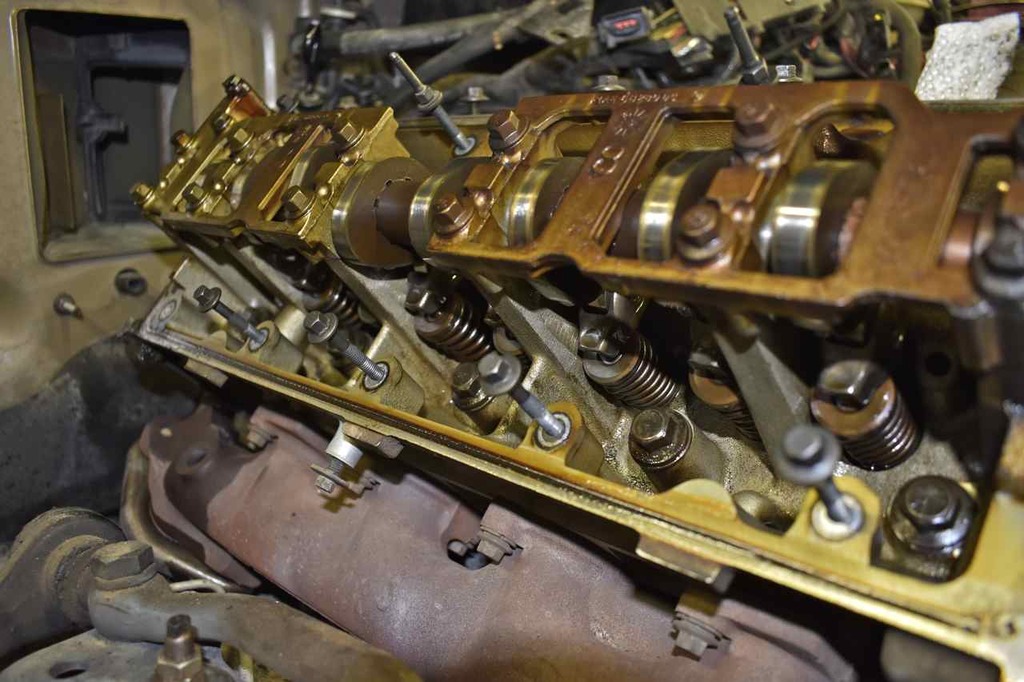
The timing chain looks like something off a bicycle.
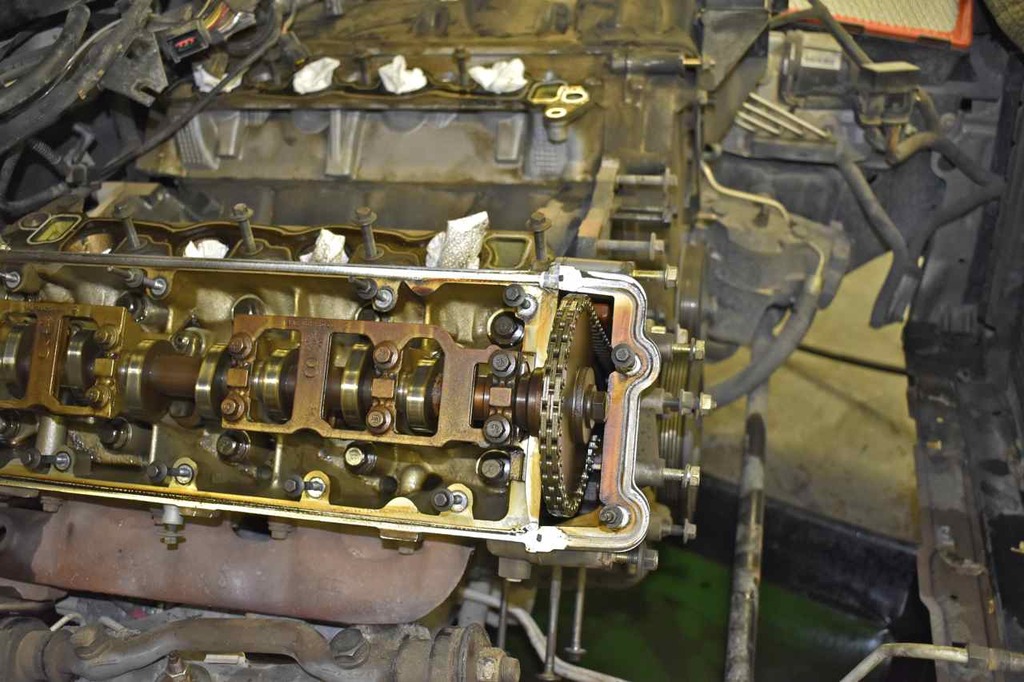
This are the dinkiest parts in an otherwise physically large engine! The way the head is constructed it looks like something Orville and Wilbur Wright made for their Wright Flyer.
At this point I am not sure who the joke is on more o_O.
No wonder this thing gets 30+ MPG. Then again if I put an otherwise overgrown lawnmower engine with overdrive in an car, what does one expect ;)
Done for today... Tomorrow reassembly....
Click here to continue to part 2